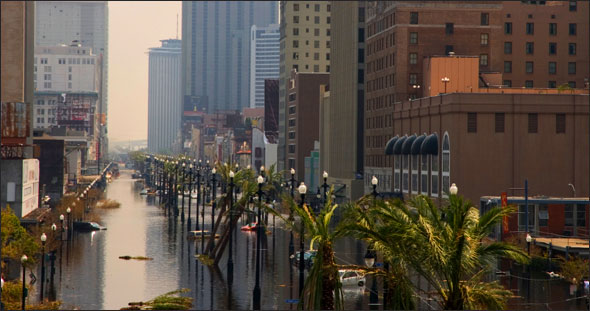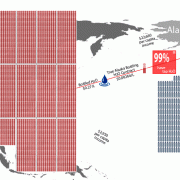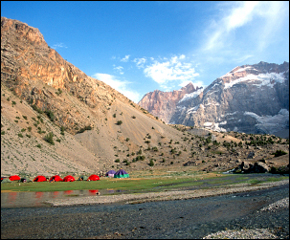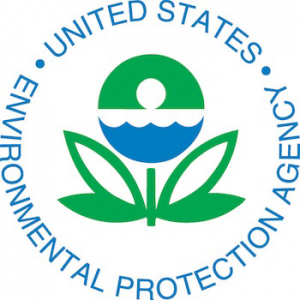Plugging a Leak — Post-Katrina New Orleans Wants Feds to Pay for Water System Overhaul
City officials have something to prove, and the city has a lot riding on it.
 New Orleans city officials say that Hurricane Katrina battered an infrastructure system that was already in disrepair before the disaster. Now the city is seeking federal assistance for a major overhaul of its deteriorating water supply network.
New Orleans city officials say that Hurricane Katrina battered an infrastructure system that was already in disrepair before the disaster. Now the city is seeking federal assistance for a major overhaul of its deteriorating water supply network.
If city authorities can document that Hurricane Katrina ruined more than 50 percent of the water distribution system, the Federal Emergency Management Agency (FEMA) — which has already committed $326 million to repairs — will be charged with the full cost of replacing a 1,400-mile network of pipes, valves, pumps and meters, according to the Times-Picayune.
Federal regulations allow FEMA to replace a water system if the costs for damage-related repairs exceed 50 percent of the replacement costs, agency spokesman Raymundo Perez told Circle of Blue. The several-billion-dollar overhaul of the New Orelans water infrastructure would focus on the east bank system, the larger of the city’s two water supply networks.
Officials at the New Orleans public utility — the Sewerage and Water Board — have not submitted paperwork to initiate the claims process, but they are keeping their options open, the Times reports. An editorial in the same newspaper urged city officials to proceed with the claim.
For now, city authorities are content with a change in FEMA policy that will have the federal agency replace entire blocks of water lines instead of patching individual joints, as has been the case. The point-by-point approach was used to ensure that federal money was put only toward repairing damage caused by the hurricane, but it often just increased water pressure on weaker joints down the line until they too failed.
The 2005 storm has degraded an already malfunctioning water infrastructure. A city assessment completed before Katrina estimated that renovating the distribution system would cost $3.2 billion over 20 years. Since 2005, the water lost to leakage grew from 35 to 50 percent of all water entering the system. The number of annual leaks per mile of pipe increased from 4.5 in 2004 to 14 last year. Industry standards consider an annual average of 0.56 per mile “adequate,” S&WB General Superintendent Joe Becker told the Times.
The high leak rate means the water utility has to supply more water to meet demand. S&WB is delivering 14 percent more water compared to the pre-Katrina period, even though its customer base is 18 percent lower. This has increased the costs for energy and water treatment.
The utility’s own purification plant is buckling under the strain and had to shut down for emergency repairs in November, resulting in a two-day boil-water advisory.
To date, repair work has restored the water pressure to pre-Katrina levels, and disaster-related water losses have dropped 30 percent, Perez said.
Source: Times-Picayune
Circle of Blue provides relevant, reliable, and actionable on-the-ground information about the world’s resource crises.







Leave a Reply
Want to join the discussion?Feel free to contribute!